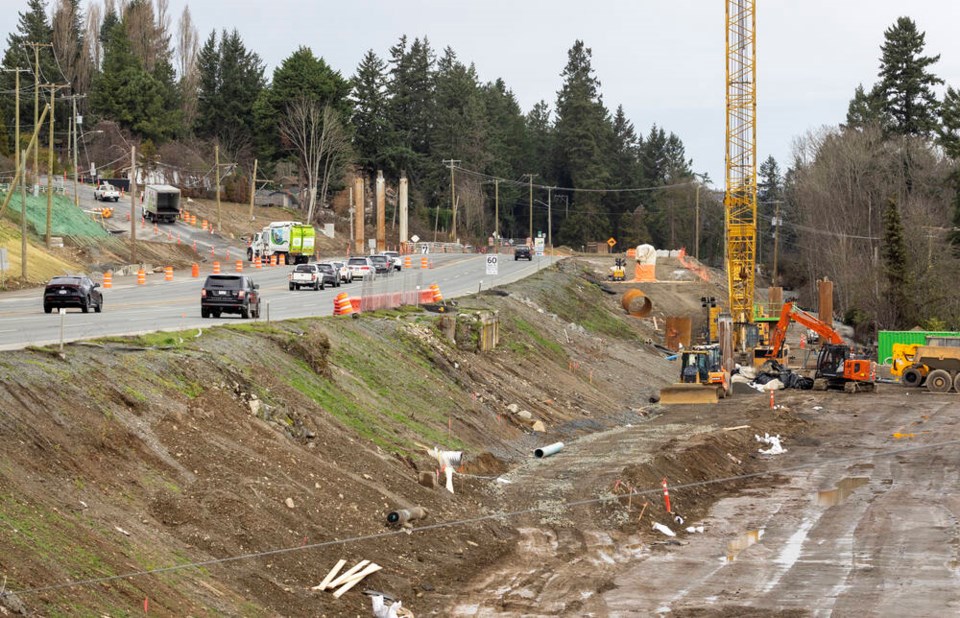Six months into a two-year build, the Keating Cross Road overpass on the Pat Bay Highway is on schedule, although police have caught plenty of drivers speeding through the construction zone, where the limit is 60 km/h.
Fines for construction zones can include $196 to $253 for speeding, $196 for disobeying a flag person and $121 for disobeying a traffic-control device.
Concerns have also been raised by area residents about drivers taking impromptu detours through adjacent neighbourhoods, but Central Saanich Mayor Ryan Windsor said traffic is largely making its way smoothly through the affected stretch of highway.
The $76.8-million project at the intersection of Keating Cross Road and the highway has $57.6 million in funding from the province, with $16.7 million coming from the federal government and $2.5 million from Central Saanich.
Transportation Minister Rob Fleming has called the highway, travelled by more than 52,000 vehicles daily, one of the most important connector routes in the region, with its link to the Swartz Bay ferry terminal and Victoria International Airport — along with the promise of future rapid-bus service.
The overpass project, Fleming said, is a key improvement.
It has a “flyover” design instead of one for a full interchange, in part because it will take in the smallest amount of area within the surrounding Agricultural Land Reserve.
The flyover will eliminate the need to turn left across highway traffic onto Keating, which Central Saanich police have called one of the municipality’s most dangerous traffic areas.
Pile-driving to install supports for the main flyover structure is just finishing after a September start, said Janelle Staite, the Ministry of Transportation’s deputy director for the south coast region.
Work also recently wrapped up to the north at the highway’s Mount Newton Cross Road intersection, where “queue jumper” lanes that allow buses to bypass congestion are now in place.
Work at that site began in 2022.
As the overpass progresses, two-lane traffic in both directions is being maintained during the day — dropping to one lane each way in the evening and early morning, Staite said.
Traffic is at one lane northbound from 7 p.m. to 6 a.m. and southbound from 9 p.m.-6 a.m.
The two-lane approach is needed at peak travel times, Staite said.
“We’ve got lots of traffic that’s going through there,” she said. “We’ve got the ferry surges and the volumes of traffic that are heading in and out of Keating.”
Work can be stepped up at night when one lane in each direction is shut down, she said.
Staite said it’s all about “balance” between traffic and the requirements of the project, with the contractor paying attention to the type of night work being done and potential noise issues.
An official detour route for trucks and buses that runs by Keating Elementary School was been working well, she said, thanks to measures like a temporary crosswalk on Tanner Road, increased signage, speed-reader boards and police presence.
The final product will accommodate traffic and local growth well into the future, she said.
“We worked closely with Central Saanich to understand their growth projections, both from a community perspective and with the Keating Industrial Park.”
Keating will also be widened and have new sidewalks, and highway access will be closed at East Saanich and Martindale roads. The ministry expects the flyover to be completed in spring 2025.



